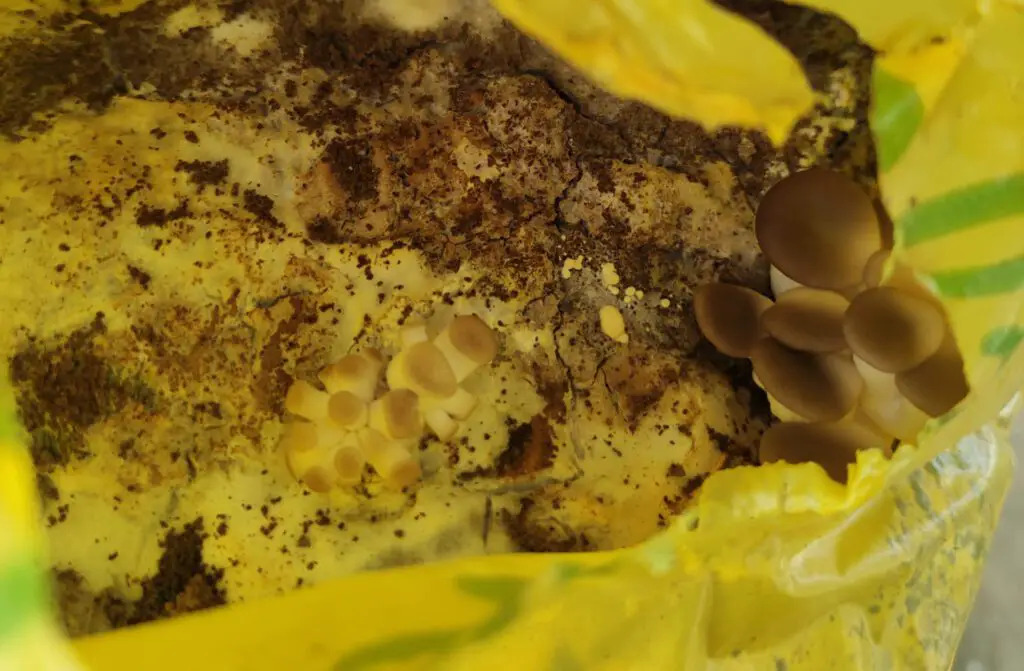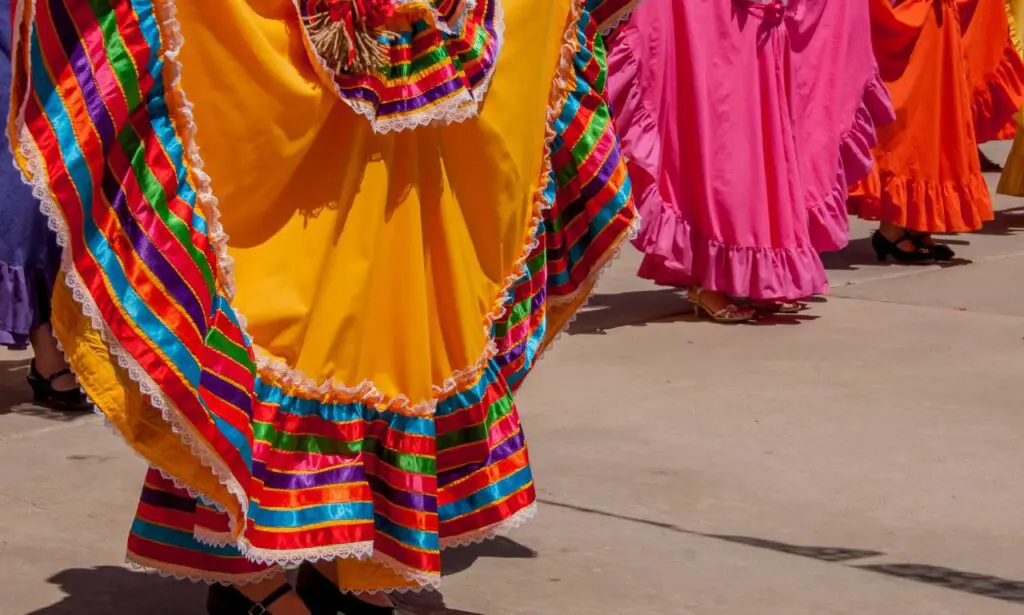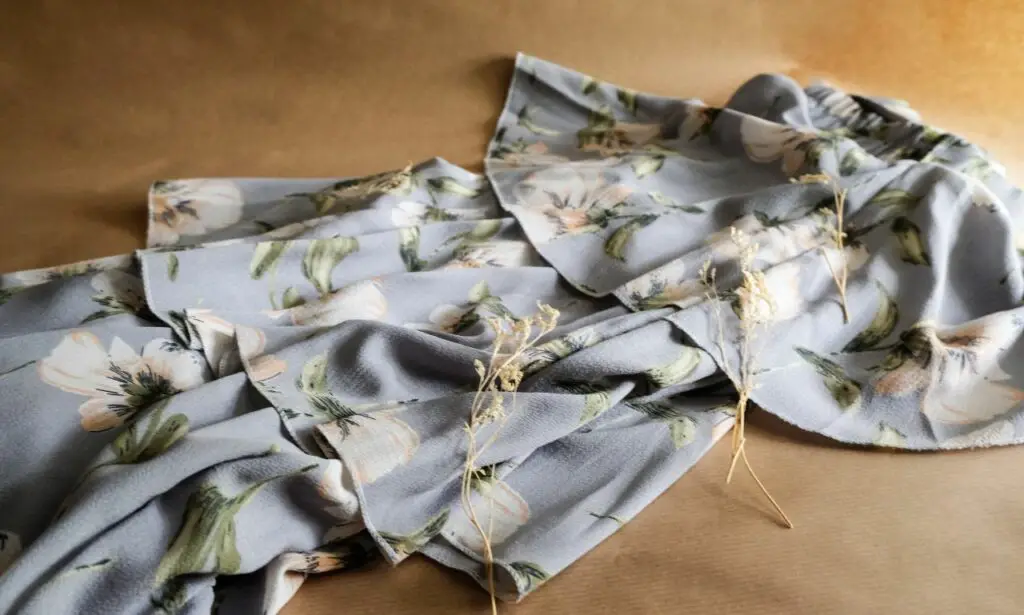Welcome, fashion-savvy eco-warriors! Today, we’re going to explore an unconventional mash-up of style and sustainability that’s sure to pique your curiosity. Picture this: you, growing your very own oyster mushrooms on your old maxi dresses and skirts. Yes, you read it right! This isn’t just a wild flight of fancy; it’s a reality that’s as fascinating as it is eco-friendly. So, if you’ve got a penchant for the unique, a love for the environment, and a soft spot for maxi dresses, then buckle up. This guide is about to take you on a journey where fashion meets farming in the most unexpected yet delightful way!
Why Oyster Mushrooms?
Now you may be wondering, “Why oyster mushrooms?” Well, let’s dive into the world of these fantastic fungi and find out!
Oyster mushrooms are a type of edible fungus that’s not only delicious but also packed with health benefits. Known for their delicate texture and mild, savory flavor, they’re a versatile ingredient in many cuisines. But what makes them truly special is their adaptability and ease of cultivation.
Unlike some other mushroom varieties, oyster mushrooms aren’t picky eaters. While they may have a preference for hardwood, they can grow on virtually any organic matter. This means your old clothes made from organic materials can become the perfect substrate for these fungi to thrive.
So, whether it’s a worn-out pair of jeans, faded t-shirts, sweatshirts past their prime, well-loved hoodies, or those maxi dresses and skirts you adored last season, they all can serve a new purpose. Instead of contributing to landfill waste, they can become a source of sustainable, home-grown food.
Choosing to grow oyster mushrooms not only offers you an interesting hobby but also allows you to contribute to the cycle of sustainability. In essence, you’re giving your clothes a second life, turning fashion into food, and doing your part for the environment – all while cultivating some tasty and nutritious mushrooms!
To those of you who have never grown mushrooms before – I’d recommend to start by growing them from a kit. North Spore’s kit is my favorite, because of their Climate Pledge Friendly badge, and their great mushrooms.
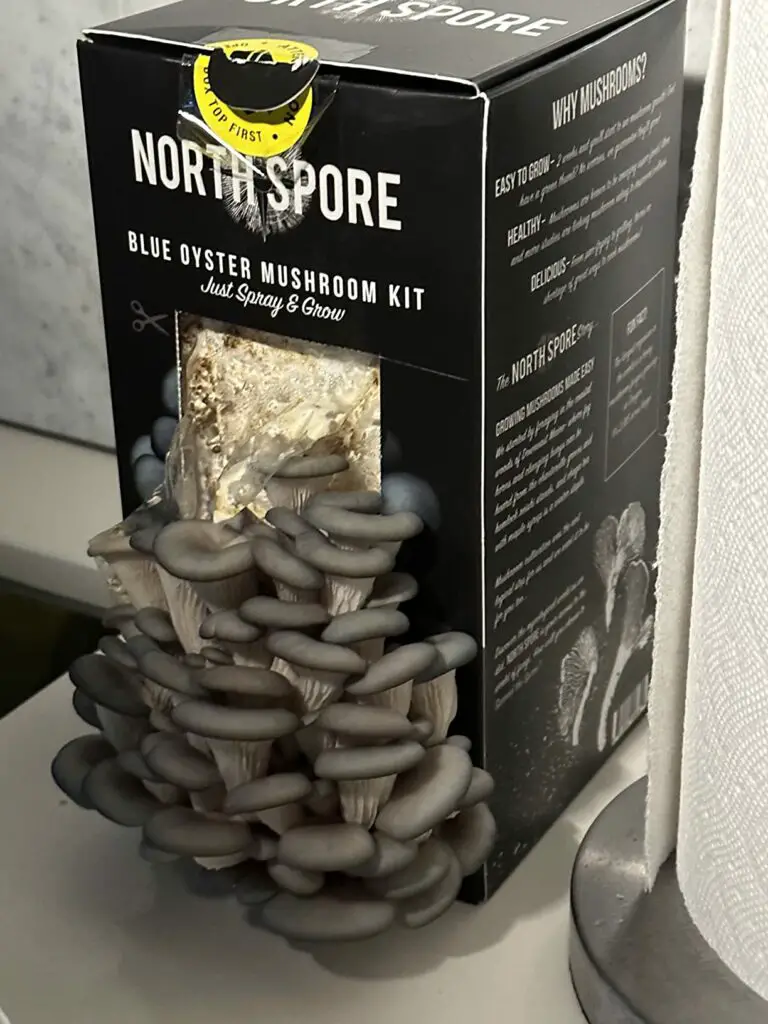
If this is not your first time, or it is but you are adventurous – let’s get to the instructions:
How to grow oyster mushrooms on old clothes:
Before we start, you should know that everything I do with clothes – can be done with old unused items like books and toys. The process is also the same.
Gather Your Supplies
Before we dive into the step-by-step process, let’s make sure you have everything you need to get started on this unique endeavor:
- Old clothes: Organic Material: Gather up your old clothing items made from organic fabric. This can be anything from jeans to t-shirts, or even old books. These will serve as the base substrate for your mushrooms to grow on.
- Grain Spawn: This might sound a little sci-fi, but bear with us! Grain spawn are essentially grains that have been inoculated with mushroom mycelium. Think of them as small plants in a nursery – someone has already done a part of the work for you! These will act as the ‘seeds’ for your mushroom cultivation. You can find grain spawn through a bit of online research. Look for local suppliers or even check out global platforms like Amazon. It’s always exciting to support local businesses, but accessibility and convenience are key when starting a new project like this. I grew blue oyster. Other types like Sajur, pink, and yellow – also work.
- A Suitable Container: You’ll need something to house your growing mushrooms. This could be a box or, as I used, a plastic bag. Sterility is key here, so consider using a new garbage bag or sandwich bag. Even a clean shopping bag could work in a pinch. You can order grow bags online, but we’re here for sustainability so let’s reuse what ew already have.
- Ideal Weather Conditions: Oyster mushrooms flourish best in mild weather conditions, typically in autumn or spring. If you live in an area where summers are cool, that season may work too. However, cold winters won’t be conducive to your mushroom-growing venture.
- The Right Location: Ensure you have a location with ample fresh air and shade. Mushrooms don’t do well with direct sun. This could be near an open window, in your yard, right next to your storage shed door, or on your balcony. Mushrooms thrive not just in favourable weather conditions, but also in environments rich in fresh air. When they are exposed to such conditions, their stems tend to be more compact and the caps significantly larger.
Remember, ensuring you have all the necessary items upfront will make the whole process smoother and more enjoyable. Now, let’s get growing!
The Process:
Firstly, ensure you’re using organic fabric. In my case, I had an old pair of ripped jeans and a worn-out t-shirt. To prepare these items, I first soaked them in boiling water. This step is crucial as it allows the fabric to absorb moisture, which is vital for mushroom growth, and also serves to disinfect the material.
Next, I washed my hands. More meticulous people will wear gloves and clean them with alcohol.
I rinsed the clothes until water stopped dripping and I created what I like to call a ‘mushroom lasagna’ inside the bad. I folded the pre-soaked clothes, placing layers of grain spawn (our mushroom bed) between the folds. This way, the mushroom mycelium is evenly distributed throughout the fabric.
Finally, I sealed the bag. The bag serves two essential purposes: it keeps pests out and ensures the moisture within doesn’t evaporate. This creates the perfect environment for your oyster mushrooms to grow and thrive.
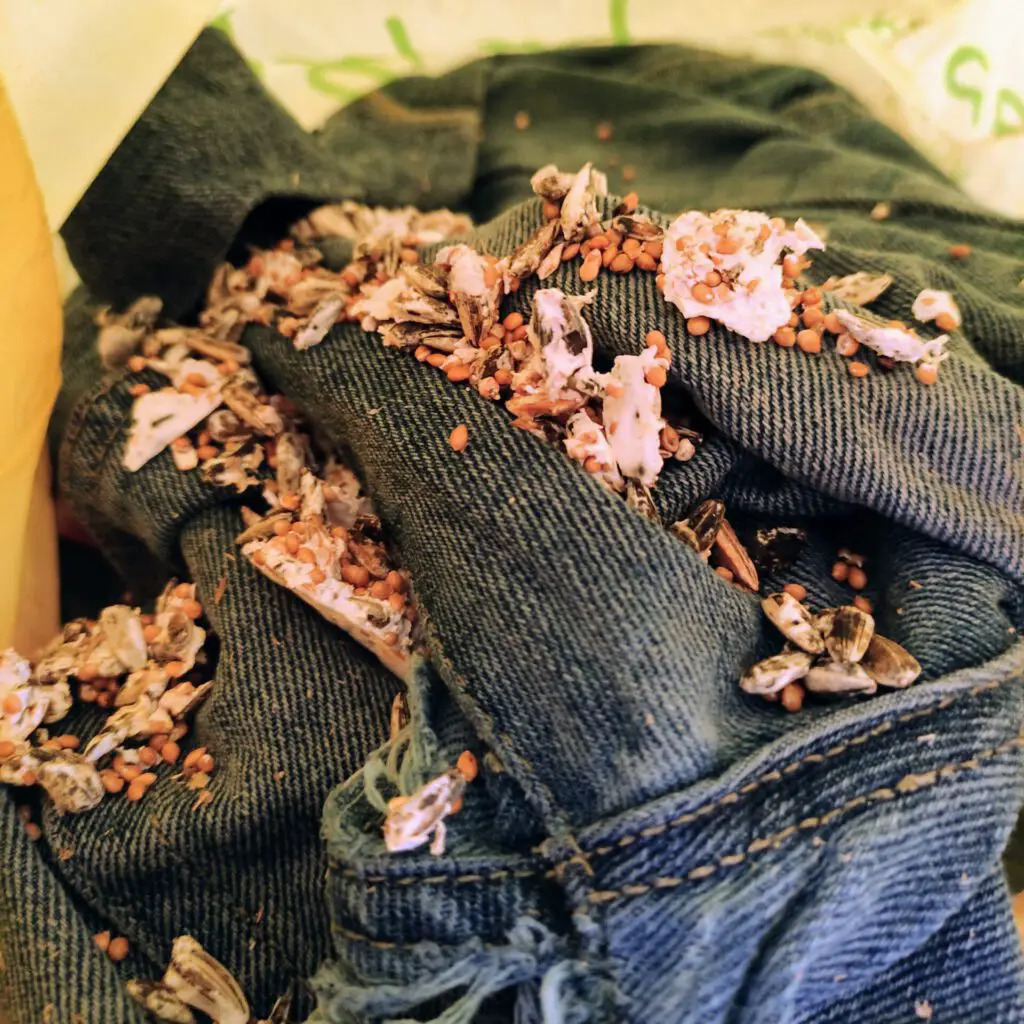
Waiting, opening, and coffee
I put the bag under the bed for about two weeks, in complete darkness and at room temperature.
After two weeks, I took out the bag, poked two holes in it and put it on top of the pile of more standard boxes in which I tried to grow mushrooms.
About twice a day I spraied water on the mushrooms. You can see the water bottle at the bottom right corner.
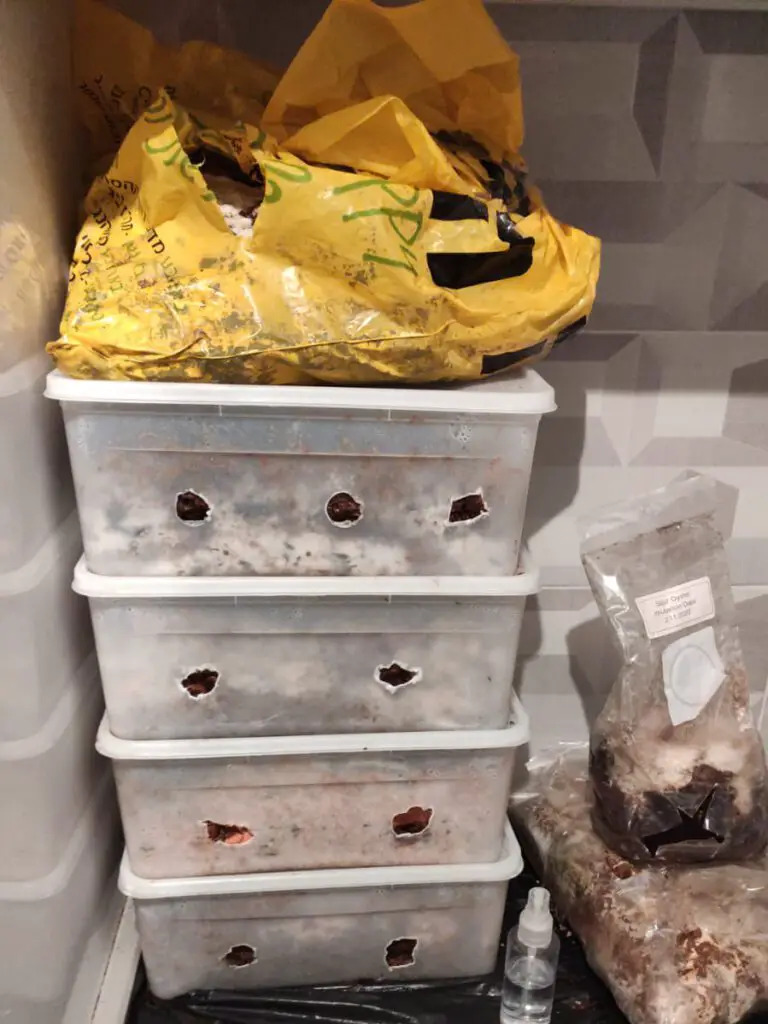
The Extra Step you don’t have to take:
What followed next was a bit unconventional and entirely optional, driven more by my curiosity than necessity. Based on my previous experiences growing mushrooms on old clothes, I knew they would grow perfectly fine without this additional step.
Even though it’s typically advisable not to interfere with the bag, my adventurous side got the better of me. I decided to add the remnants of black coffee and some week-old coffee grounds from my macchinetta to the bag containing the clothes. In hindsight, I should have boiled them once more for optimal cleanliness and incorporated them during the ‘lasagna’ preparation stage.
Interestingly, oyster mushrooms can be cultivated on coffee. The heat from the macchinetta and the black coffee likely sterilized the coffee grounds enough. Moreover, coffee can provide additional nutrients for the fungi, potentially promoting even better growth. To illustrate this, there’s a video featuring two individuals successfully growing oyster mushrooms on coffee grounds!
The progression of the mycelium within the bag resembles a frosty layer of ice – a fascinating sight indeed! However, resist the urge to touch it directly.
Despite my unconventional methods that might make experienced mushroom growers cringe, I aimed to maintain cleanliness throughout the process. Direct contact with your hands could inadvertently introduce contaminants, posing unwanted competition for your growing mushrooms.

A month and a half into the process, my husband, having grown somewhat impatient, moved the mushrooms out into the yard, setting them in a shady spot. I kept spraying them with water about twice a day.
By then, it was late January. Living in a warm place, the harshness of winter had subsided and the mushrooms found themselves in an environment with the fresh air they crave and temperatures that suited them perfectly. Lo and behold – a week after their relocation to the yard, mushrooms began to sprout from the amalgamation of clothes and coffee!
Had I placed them outside from the get-go during milder weather, the process would have been expedited by about two weeks.
The mix of coffee and old clothes yielded three flushes of mushrooms. A separate set that I had placed in my backyard, sans coffee, produced two flushes.

Conclusion:
Growing mushrooms at home can be a fun and rewarding endeavor, not just for the fresh produce you’ll gain, but also for the opportunity to recycle and repurpose waste materials. It’s fascinating to observe how everyday items like old clothes or books can serve as a thriving substrate for mushrooms, especially oyster mushrooms renowned for their adaptability.
While this method may not yield an abundant crop compared to more traditional substrates, it does serve multiple purposes – recycling, learning, and of course, producing your own mushrooms. Remember, the key is to provide an environment with fresh air, suitable temperatures, and a good substrate, whether it’s wood, books, or old t-shirts!
From this journey, we learn that sometimes, the unconventional route can lead to exciting discoveries. So why not give it a try? Turn your waste into wonder, and enjoy the unique experience of homegrown mushrooms.
FAQ
I create more waste than I’d like and the world doesn’t need my give-aways. Consequently, I’ve turned to growing these mushrooms on various items like old clothes and books. However, it’s worth noting that these aren’t the ideal food sources for them. If your primary objectives are enjoyment, recycling, and resource utilization, this approach is excellent. If you’re focused on maximizing mushroom yield, there are more suitable substrates available.
The most suitable substrate for mushroom cultivation is typically wood-based, like wood chips or straw. Other popular materials are soy hulls and coffee. Experimenting with more unconventional organic substrates works if you’re feeling adventurous.

